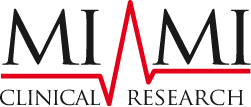Growth of the U.S. CRO Market
Growth of the U.S. CRO Market
The U.S. Contract Research Organization (CRO) market is experiencing unprecedented growth, driven by the increasing complexity of clinical trials, rising drug development costs, and the demand for specialized research expertise. As pharmaceutical companies seek to accelerate timelines and reduce overhead, CROs have become essential partners across all phases of clinical research. This shift has fueled a thriving, competitive, and innovative CRO market in the United States.


Market Overview
The U.S. CRO industry is currently the largest in the world, accounting for a significant portion of the global clinical research market. According to market research reports, the U.S. CRO market was valued at over $20 billion in recent years and is expected to grow at a compound annual growth rate (CAGR) of 7–9% through the end of the decade.
The surge in demand is tied to several converging trends, including increased outsourcing by pharmaceutical and biotech firms, a growing number of clinical trials, regulatory complexities, and a heightened emphasis on speed-to-market.
Key Drivers of Market Growth
- Rising R&D Spending by Pharma and Biotech Companies
Drug development is more expensive than ever, with companies spending billions to bring a single product to market. To control costs and manage complex research pipelines, many firms outsource clinical activities to CROs that offer cost-effective, scalable solutions. - Outsourcing as a Strategic Imperative
Instead of handling all operations in-house, sponsors are increasingly outsourcing core and non-core functions to CROs—from clinical trial design and site management to data analysis and regulatory submission. This allows for greater flexibility, access to global networks, and operational efficiency. - Increasing Clinical Trial Complexity
As protocols become more intricate and trials span multiple geographies, the operational burden on sponsors intensifies. U.S. CROs, with their advanced infrastructure and regulatory knowledge, are well-positioned to support complex, multicenter studies. - Rise of Specialized CROs
The market now includes a growing number of niche CROs that specialize in specific therapeutic areas, populations (such as pediatrics or rare diseases), or technologies (like digital trials). This specialization makes them attractive partners for sponsors pursuing targeted research. - Growth in Biologics and Advanced Therapies
The expansion of research in cell therapy, gene therapy, and biologics has spurred demand for CROs with expertise in handling sensitive materials and sophisticated trial protocols.


Trends Shaping the U.S. CRO Market
- Decentralized Clinical Trials (DCTs):
The pandemic accelerated the adoption of remote and hybrid clinical trial models. U.S.-based CROs have led the charge in integrating telemedicine, eConsent, and wearable devices into trial protocols to reach patients where they are. - Data Integration & Advanced Analytics:
CROs are investing in AI, machine learning, and big data analytics to streamline site selection, monitor trial progress in real time, and improve data quality. - Strategic Partnerships & Mergers:
The U.S. CRO landscape is undergoing consolidation, with mergers and partnerships between mid-sized and large CROs. This trend allows for the pooling of resources and global expansion while offering clients end-to-end services. - Regulatory Expertise:
CROs in the U.S. provide a competitive advantage due to their deep understanding of FDA regulatory requirements. Their ability to navigate pre-IND meetings, Investigational New Drug (IND) submissions, and NDA filings is a major value proposition.
Benefits of the Expanding CRO Market
- Faster Time-to-Market:
By outsourcing to experienced CROs, sponsors can reduce trial duration and get products to patients sooner. - Access to Broader Talent and Infrastructure:
CROs offer sponsors access to experienced investigators, advanced technology platforms, and established trial networks—resources that would take years to build in-house. - Cost Containment:
Outsourcing eliminates the need to invest in permanent infrastructure or staff, enabling companies to scale operations as needed. - Improved Trial Quality:
Many U.S. CROs are certified to high standards (e.g., ISO, GCP-compliant) and maintain robust quality assurance systems that enhance data integrity and regulatory compliance.


Conclusion
The growth of the U.S. CRO market reflects a larger shift in how clinical research is conducted—leaner, faster, and more collaborative. As the demand for specialized expertise and operational efficiency increases, CROs will continue to play a central role in shaping the future of drug development. For sponsors seeking to navigate regulatory complexity, control costs, and accelerate innovation, partnering with a reliable U.S.-based CRO offers a strategic advantage that is becoming essential in today’s global clinical landscape.

